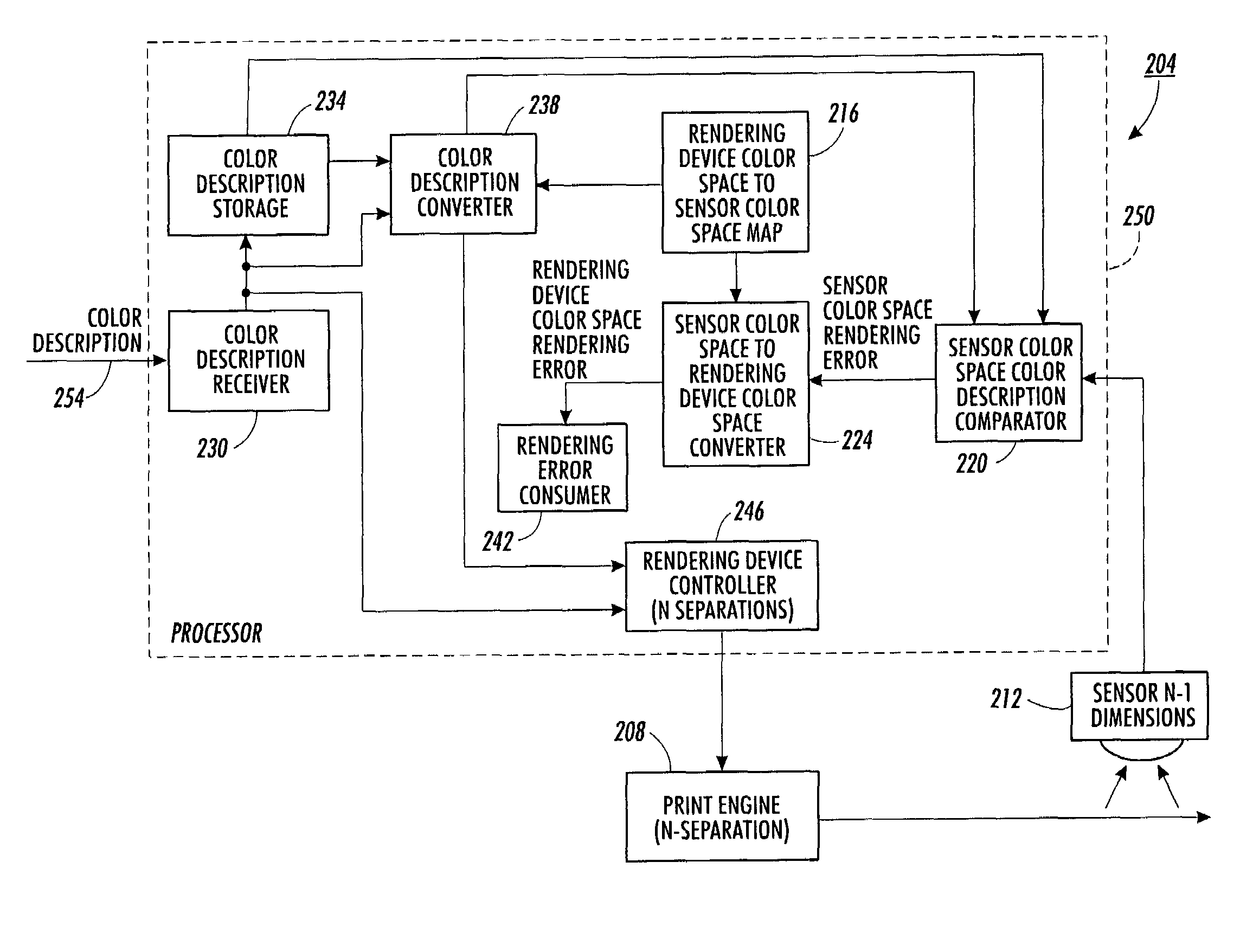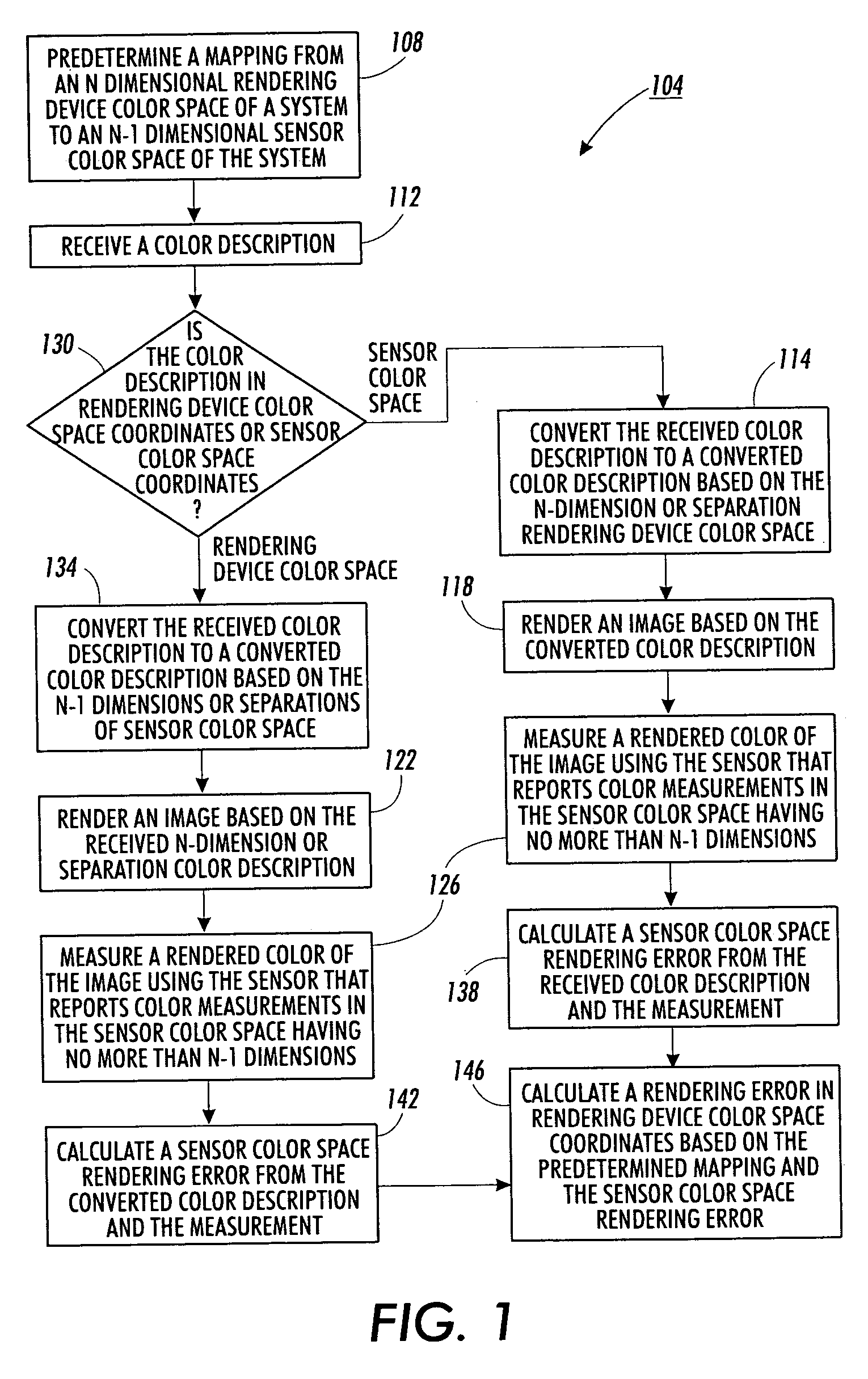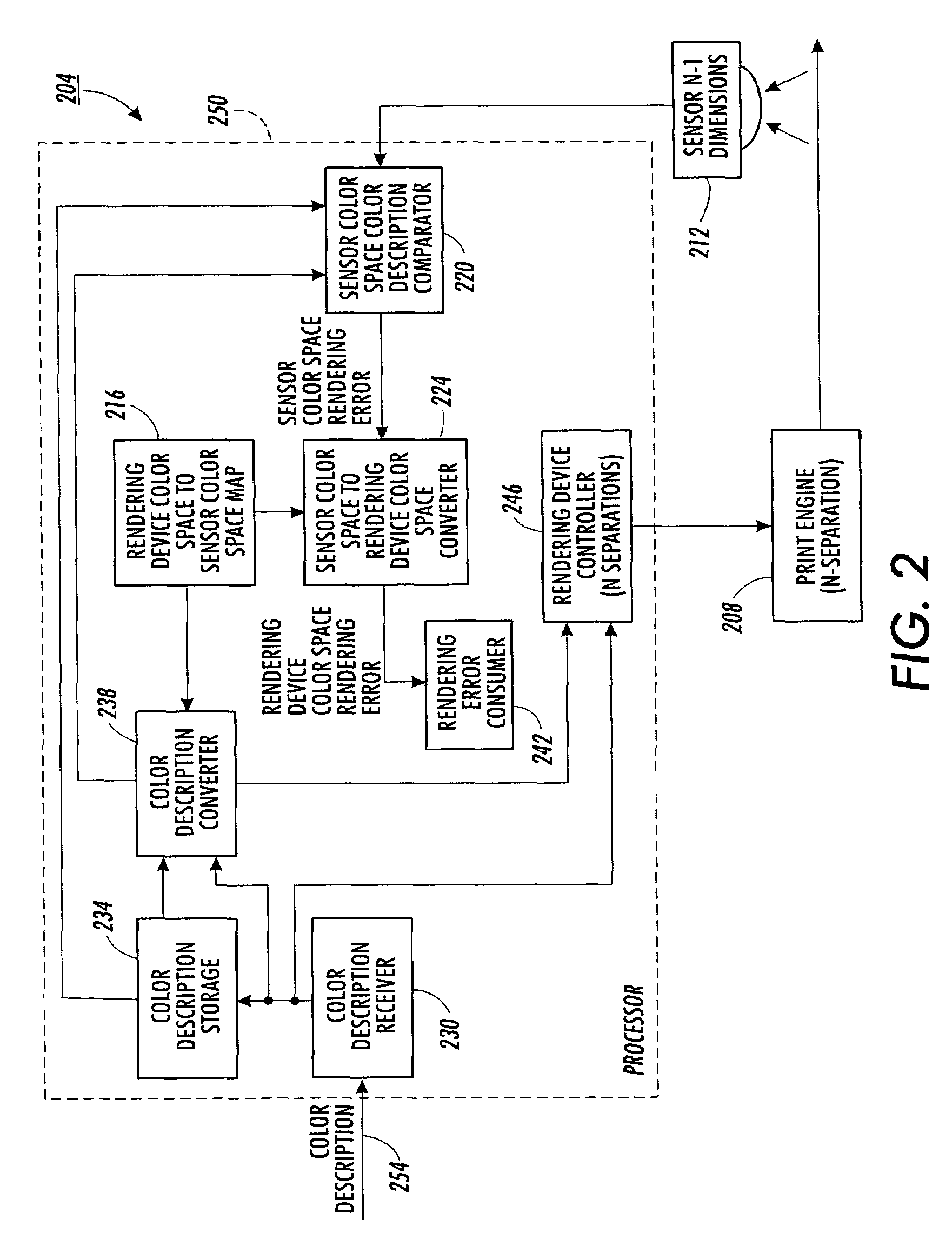Method for calculating colorant error from reflectance measurement
a reflectance measurement and colorant error technology, applied in the field of color measurement, can solve the problems of difficult conversion of three-dimensional color space color measurements to four-dimensional dimensions, inconvenient use, and inability to readily be found
- Summary
- Abstract
- Description
- Claims
- Application Information
AI Technical Summary
Benefits of technology
Problems solved by technology
Method used
Image
Examples
second embodiment
[0062]In a second embodiment, the predetermined 108 mapping takes the form of a color printer characterization encoded as a table mapping from CMYK to RGB. Processing proceeds in a similar manner. However, certain of the equations and structures are adjusted accordingly.
[0063]For example, in these embodiments, calculating 146 the rendering error can include differentiating the mapping from CMYK to RGB in all dimensions, yielding a matrix (Jacobian) of the form
[0064]M=[∂R∂c∂R∂m∂R∂y∂R∂k∂G∂c∂G∂m∂G∂y∂G∂k∂B∂c∂B∂m∂B∂y∂B∂k]=[MRcMRmMRyMRkMGcMGmMGyMGkMBcMBmMByMBk](12)
[0065]Given the matrix M derived from the derivative table and the predetermined 108 mapping, we can determine for any given received 112 input CMYK the expected RGB (C1) and the measured RGB (C2). The difference, then, is given by ΔC=C2−C1=(ΔR, ΔG, ΔB)T.
[0066]Now define x as the vector (Δc, Δm, Δy, Δk)T, which is the difference between the intended and actual CMYK. Given a smooth, continuous characterization function, perfectly...
third embodiment
[0085]In a third embodiment, in addition to a predetermined 108 mapping from CMYK to RGB there is an additional mapping from RGB to L*a*b*. Information from these two mappings can be used to predetermine 108 a mapping from CMYK to L*a*b*. This gives us two ways of obtaining L*a*b*: first, we can convert the input (i.e., received 112) CMYK values, and second, we can convert measured RGB values. By converting received 112 and measured 126 color descriptions to L*a*b* we can obtain a color difference vector ΔC as before, only this time it is computed as (L*2−L*1, a*2−a*1, b*2−b*1). Applying all of the same mathematics as described above, with this version of color difference vector, may produce an improved effect, as the difference is calculated in a visually meaningful space.
[0086]It should be noted that, while the above description assumes one must compute the Jacobian matrix M from information in an original mapping (e.g. from CMYK to L* a* b* or RGB), having the original mapping is...
PUM
 Login to View More
Login to View More Abstract
Description
Claims
Application Information
 Login to View More
Login to View More - R&D
- Intellectual Property
- Life Sciences
- Materials
- Tech Scout
- Unparalleled Data Quality
- Higher Quality Content
- 60% Fewer Hallucinations
Browse by: Latest US Patents, China's latest patents, Technical Efficacy Thesaurus, Application Domain, Technology Topic, Popular Technical Reports.
© 2025 PatSnap. All rights reserved.Legal|Privacy policy|Modern Slavery Act Transparency Statement|Sitemap|About US| Contact US: help@patsnap.com



